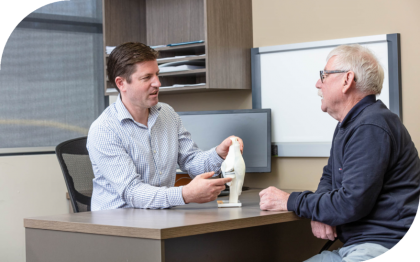Revision Knee Replacement
What is a Revision Knee Replacement?
When the bonds that connect your implant to bone become loose, micromotion can occur between the prosthesis and the bone resulting in pain. This pain is generally worse on initial weight bearing after some rest. To treat this problem, some or all of the components need to be replaced.

Who would require a Revision Knee Replacement?
Some prostheses will show signs of wear over time. This is best seen on xrays. The plastic (polyethylene) component is usually the material that wears first. Very often the polyethylene wear also leads to resorption of normal bone, a process called osteolysis.
Some patients may experience instability in the knee. This may be due to failure of a ligament to support the knee or may be due to imbalance of the prosthetic components.

Regardless of the cause of failure, revision surgery is generally a more complex and time-consuming procedure than a primary first-time knee replacement. The procedure involves exposure of the joint through old scar tissue and then removal of the prosthesis. If there are bone defects or bone loss, then special implants or even bone grafts may be required to achieve appropriate fixation.
Sometimes the supporting ligaments of the knee can become unreliable, and this may necessitate extra constraints to be built in to the prosthesis. The risks are similar to those in the primary knee but they occur more frequently in the revision setting. The decision to revise a knee replacement is made after balancing these risks as well as the benefits of the procedure.
